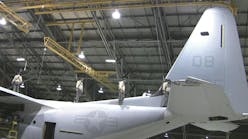Oxygen booster pumps provide many important benefits in aviation applications, delivering more efficient usage of low-pressure oxygen bottles; requiring less man-hours to set up and perform a refilling service; and requiring a smaller oxygen inventory to perform the same job as a cascade system. Such devices can be used with confidence when installed, operated, and maintained properly.
However, there is an inherent risk associated with handling pure oxygen under pressure. A fire can occur in any enriched oxygen environment if components become contaminated or are operated or maintained improperly, especially at elevated pressures and temperatures. Such a fire can result in serious injury, death, or severe property damage.
Given such risks, it is imperative that all personnel handling such equipment be thoroughly trained in handling high-pressure oxygen, follow industry-standard safety practices, and operate and maintain all equipment in accordance with the manufacturer’s operating guidelines and instructions. Following are some additional recommendations to help ensure safe handling of pure oxygen under pressure and minimize the chances of creating a combustible atmosphere.
Equipment assembly
All oxygen supplies should be complete with shutoff valves, pressure gauges, pressure regulators, and manufacturer’s recommended hose. Furthermore, all booster components should be rated for the specified pressure and conform to National Fire Protection’s NFPA-53 Guidelines. Should a fire occur, continued oxygen flow following ignition can exacerbate the problem. A means to quickly terminate the flow of oxygen in the presence of excess flow should be incorporated into the system.
Operation
Always inspect your equipment before use. Damaged, contaminated, or oily equipment should never be used. Do not exceed the manufacturer’s stated pressure and temperature limits, and adhere to any provided temperature/pressure correction tables. When contaminants are present in pure oxygen environments, especially at elevated pressures and temperatures, combustion is more likely to occur. Again, it is critical to follow the manufacturer’s instructions for each particular unit.
Even when operators are cautious in their usage of an oxygen booster, the possibility still exists for a fire to occur. Oxygen is an oxidizing gas – chemically stable and nonflammable – but it will, when combined with other elements, support combustion. Oxygen flowing at a high velocity in a piping system can propel foreign material particles such as hydrocarbons (compressor oil) with such force that the impact friction can raise the particles’ temperature to a possible ignition point. All components used in an oxygen system should be clean, dry, and free of all contamination, per Society of Automotive Engineers (SAE) Spec. ARP 1176. To help keep out unwanted contaminants, be sure to utilize a clean coalescent filter attached to the air-input side of your booster at all times.
Never operate an oxygen booster unattended, and never use your equipment to boost air or any gas other than oxygen. The use of lubrication in an oxygen system should be kept to a minimum. If your unit requires lubrication, only use lubricants that are compatible with high-pressure oxygen systems (per manufacturer’s recommendations).
Keep the booster sheltered from solar heating, as this increases the danger of a potential fire.
Storage
Store your booster in a clean, dry, and secure area when not in use. Be sure all hoses are capped and cover the unit with a lint-free covering for the duration of unit storage to ensure complete oxygen system cleanliness for future aircraft system recharging. Inspect the equipment thoroughly before putting it back into use.
Preventive maintenance
Maintenance should only be undertaken by qualified, trained personnel, and in strict compliance with the manufacturer’s instructions. A booster should be inspected regularly in accordance with manufacturer’s recommendations, especially after periods of nonuse. If after conducting your inspection you believe that your equipment may have been compromised with suspect components or suboptimal operational or maintenance practices, return it to the manufacturer for a complete inspection and cleaning. Some manufacturers offer a recertification process where the unit is inspected and renewed with a one-year warranty. A manufacturer inspection is strongly recommended for any booster that has been in service for two years or longer since its last factory quality assurance test.
For more information concerning oxygen boosters for aviation, contact Interface Devices Inc., at (800) 539-0193 or www.interfacedevices.com. For more information concerning specific SAE Aircraft Oxygen Equipment Specifications, visit www.sae.org. For more information concerning specific Oxygen System Recommended Practices and Materials, contact National Fire Protection Association at www.nfpa.org.




